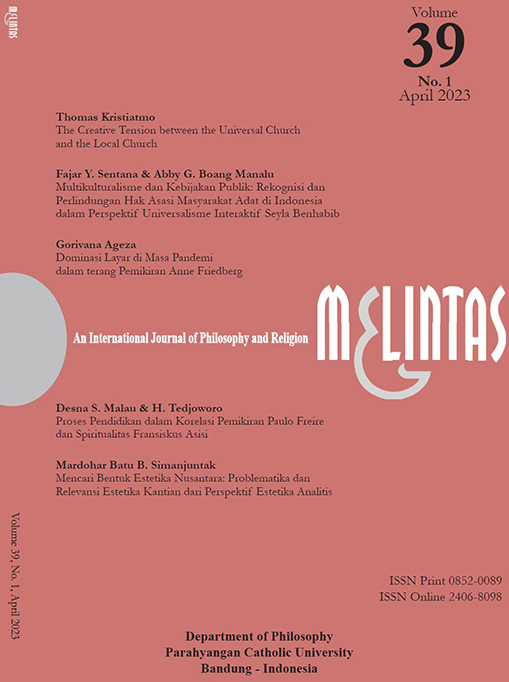Mencari Bentuk Estetika Nusantara: Problematika dan Relevansi Estetika Kantian dari Perspektif Estetika Analitis
DOI:
https://doi.org/10.26593/mel.v39i1.7754Keywords:
Kantian aesthetics, Indonesian aesthetics, the sublime, analytical philosophy, traditional art practicesAbstract
Finding a common philosophical grounding for an Indonesian aesthetics seems to have been problematic. In another word, for a string of archipelagos consisting diverse customs and cultures partially constructed through colonial invasions dating from the 17th century, defining its existential beauty is never a simple argumentative task. The author attempts to elaborate Immanuel Kant’s ideas from his seminal work Critique of Judgment, although Kant’s central position in aesthetics studies does not imply that his disposition is free from ambiguity. The author employs analytical philosophy approaches to elaborate Kant’s ambiguous position and weakness. These are intended as preliminary step towards implementing Kant’s argument in building a fundamental Indonesian aesthetics theory with sufficient explanatory power to describe the variety of Indonesian traditional arts. Further step is to form a strong theoretical foundation for the development of artistic practices in the modern Indonesia. This article concludes that Kant’s implied position of the sublime could be a viable alternative in resolving this conundrum.
Downloads
Published
Issue
Section
License
Copyright (c) 2024 Mardohar Batu Bornok Simanjuntak

This work is licensed under a Creative Commons Attribution-NonCommercial 4.0 International License.
MELINTAS applies the Creative Commons Attribution (CC BY NC) license to articles and other works we publish. If you submit your paper for publication by MELINTAS, you agree to have the CC BY NC license applied to your work.


